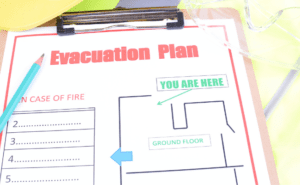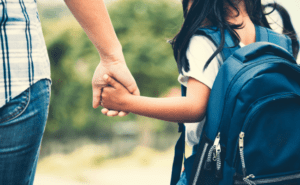Having a family safety plan is one of the best things you can do for your loved ones. It gives them peace of mind knowing that they will be safe and cared for should something happen. This blog post will discuss a family safety plan, why it’s essential to have one, and how to create an emergency contact list and child care services list. We’ll also include tips on how to keep children safe in school.
What is a Family Safety Plan, and Why is it Important?
As a parent or caregiver you have the responsibility to keep your children safe. You may not be able to control what happens in the world, but there are some things you can do. The best thing is to prepare for any situation that might happen and know how to handle it. Having a family safety plan means being prepared for anything from natural disasters, a home fire, or kidnappings, or even school shootings. It’s important because these days we never know when something might happen, so it’s good to always be on guard and ready!
How to Create a Family Safety Plan.
The most important thing you can do to keep your family safe is to create a safety plan. Developing an emergency plan for your family includes deciding what type of emergencies might happen, where the best place may be for everyone in your home to go during these emergencies, and how you will contact each other.
1. Create a family safety plan with your spouse or partner and invite your kids to help.
A family safety plan should be collaborative, and everyone should be involved in the process. Try to make it a fun game for the kids to practice problem-solving skills.
2. Establish an emergency contact list for everyone in the house.
Think about the people in your life you would seek help from if something happened to you. It could be a family member, friend, or co-worker. This is who should go on your emergency contact list.
It’s also good to keep a list of important phone numbers on your refrigerator for quick reference and pre-program them into the cell phones if there is no service or you cannot get online.
It’s also essential to include a list of child care services that your family members or friends can contact if you’re not available for some reason, whether due to an emergency, work commitments, medical reasons, etc.
You may also want to include a list of babysitters in your area.
Keep this list updated and take out the names when you are finished using them to remain current for future reference. These lists can be stored either electronically or on paper which is then kept with the family safety plan document.
3. Plan how to get out of the house if there is a fire.

What if there was a fire or earthquake, and you had to get out of the house? What would you do? The best thing to do is create an escape plan with your family and know each person’s responsibility during the emergency. You should also have an escape route planned ahead of time.
Walk through your home and inspect all possible exits and escape routes. The National Fire Protection Association recommends that households with children consider drawing a floor plan of their home and marking two ways out of each room, including windows and doors. Also, mark the location of each smoke alarm. This way, everyone knows where they are going in case of an emergency.
4. Decide where everyone will meet after an incident has occurred at home.
This could be outside on the street corner, at a neighbor’s house, etc., so it is easy for every family member to find each other quickly.
5. Teach children what they should do if they are home alone and something happens.
Teach children not to open their doors for someone they do not know. Teach them how to spot scams and the difference between an emergency versus one where it’s safe to let people in your home.
Empower kids by giving them some tools so they can protect themselves. For example, teach them about their rights, how to stay safe in public places and at school, that they should never keep secrets from you or other adults, what types of behavior are not ok, who can be trusted vs. who cannot be trusted, etc.
Make sure you have an emergency contact list of family members and friends who live close by, so should something happen, help won’t be far away.
If you do not have time during an emergency, it’s helpful to include items that can help with temporary housing, such as sleeping bags and tents. Need help building a kit? Follow these guidelines by Ready.gov.
Tips for keeping your kids safe at school

We cannot stress enough how important it is to be prepared for emergencies and unforeseen circumstances. Here are some helpful tips on what to do in school or daycare:
1. Make sure that your child’s teacher knows how to contact you in case of an emergency. Also, find out what the school or daycare protocol is for emergencies! It may be different from other schools/daycares, so make sure everyone is involved (teacher and principal).
2. Make sure your child knows their address, phone number, and parent’s work information (just in case).
3. At the end of every school day, ensure your child knows when and where you will be picking them up (and let them know if this is different from regular days)! This way, they’ll have a sense of certainty.
In Closing
A family safety plan should be a priority for any parent or caregiver. It can help you and your loved ones stay safe in the event of an emergency, like natural disasters or active shooter situations at school. We’ve laid out some steps to get started on building your safety plan below; we also offer monthly newsletters with more tips and tricks that will make parenting easier and safer. Sign up today!
Resources for creating a family safety plan.
How to make a home fire escape plan
What can I do to be prepared for an earthquake?
How to Talk to Your Kids About School Shootings
Preparedness Checklist for Schools and Childcare Centers, Ready.gov
Emergency Contact Information List, Safe Kids Worldwide
How to Prepare Your Child for Emergencies at School & Daycare, FamilyEducation.com


